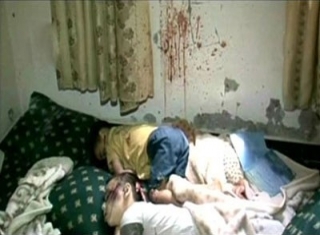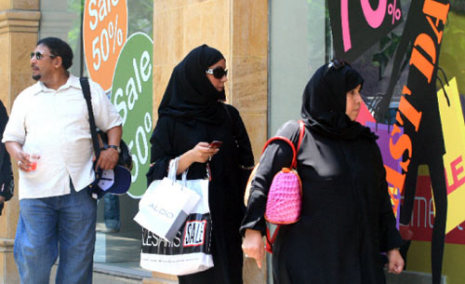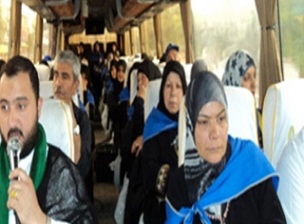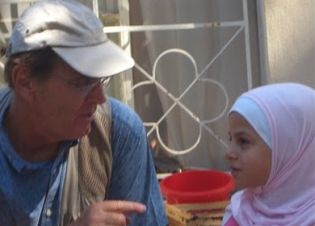The calculated and predictable global reaction, augmented by various thinly disguised western efforts, and claimed to be funded by Saudia Arabia and Qatar is to demonstrate sole Syrian government responsibility.

Despite more information slowly being made public about the Houla massacre in central Syria last week, a criminal carnage that slaughtered 110 civilians, including 49 women and children, the less it is clear who was responsible. But what is apparent is that the American government and its NATO allies have seized tightly upon the horror at Houla in order to justify yet more sanctions against Syria and also to generate international pressure for military action to achieve its original and continuing goal, regime change.
The additional sanctions being stacked up and leveraged against the Bashar Assad government following the Houla massacre include the expulsion of Syrian diplomats by more than a dozen NATO countries. But there is more to the Wests’ manipulation of the Houla murders and it is the use of the images, including one showing a baby with a pacifier in its mouth and a single bullet hole in the infants head. The calculated and predictable global reaction, augmented by various thinly disguised western efforts, and claimed to be funded by Saudia Arabia and Qatar is to demonstrate sole Syrian government responsibility.
Daily reports with more evidence are evidencing that this rush to judgment is flawed and also that the campaign is designed in the West to play upon the international publics emotions to garner support for military action against Syria, despite White House and NATO statements that the Kofi Annan 6-point peace plan must be given more time to be implemented and that military options, while ‘on the table’ are not being considered at this time.
Meanwhile, this orchestrated campaign is spilling over to Lebanon and the line between the two countries participation and effects of the Syrian crisis continues to blur.
Three or four gentlemen regularly sit outside a small grocery store, opposite this observer’s flat, drinking coffee and smoking argileh water pipes, in the Hezbollah neighborhood of Haret Hreik in south Beirut. I rely on them and value their insights into the swirling events in Lebanon and credit their analyses and gut instincts about developments on the streets.
 Many people are currently making preparations to leave Lebanon for, among other reasons, the sake of their children’s future.
”There are sparks nearly every day now. Which one will cause the explosion, we don’t know, but it is certain that one of them will,” one of them said.
The gentleman sitting next to him, a refugee from Safad, Palestine, named Mansour, assured his friends that there will not be a civil war because “those who have the arms to win one do not want one and those who want one don’t have the weapons or disciplined militia [needed] to win a civil war. Some are now joining the war in Syria as a substitute, to achieve their political goals.”
It appears that Lebanon is not simply the object or repository of spillover from the Syrian conflict but rather that it is very much an integral part of the escalating conflict in Syria.
Many people are currently making preparations to leave Lebanon for, among other reasons, the sake of their children’s future.
”There are sparks nearly every day now. Which one will cause the explosion, we don’t know, but it is certain that one of them will,” one of them said.
The gentleman sitting next to him, a refugee from Safad, Palestine, named Mansour, assured his friends that there will not be a civil war because “those who have the arms to win one do not want one and those who want one don’t have the weapons or disciplined militia [needed] to win a civil war. Some are now joining the war in Syria as a substitute, to achieve their political goals.”
It appears that Lebanon is not simply the object or repository of spillover from the Syrian conflict but rather that it is very much an integral part of the escalating conflict in Syria.
The evidence appears clear and the signs multiply daily. They are too numerous for itemization but include the warning by all six Gulf Cooperation Council countries against travel by their citizens to Lebanon, the concern expressed by the two kings Abdullah (in Saudi Arabia and Jordan) over the current status of “a particular group in Lebanon”, the alarm sounded by United Nations Secretary General Ban Ki-moon and US Secretary of State Hilary Clinton over the potentially catastrophic effects of the Syrian uprising on Lebanon, the arrest of Shadi al-Mawlawi, and the clashes in Tripoli that followed the shooting of Sunni cleric Ahmad Abdul Wahed at an army checkpoint.
 They also include the kidnapping by still-unknown persons of a group of Lebanese Shiite pilgrims, the bombing of a bus carrying Lebanese Shiite pilgrims in Baghdad, clashes between students on Lebanese college campuses and even tensions at high schools, and the clash in Ras Beirut just last Wednesday. Indeed, there are regular skirmishes on Beirut’s streets.
These events have rendered the government of Lebanon and many of its leaders the butt of jokes and derision. The one national institution that was touted as being a unifying force, the Lebanese army that is respected by most Lebanese, has had its popular image shaken over charges that its troops may have assassinated a Sunni sheikh—on orders from above and not by a couple of rogue army check-point soldiers as the army has claimed.
They also include the kidnapping by still-unknown persons of a group of Lebanese Shiite pilgrims, the bombing of a bus carrying Lebanese Shiite pilgrims in Baghdad, clashes between students on Lebanese college campuses and even tensions at high schools, and the clash in Ras Beirut just last Wednesday. Indeed, there are regular skirmishes on Beirut’s streets.
These events have rendered the government of Lebanon and many of its leaders the butt of jokes and derision. The one national institution that was touted as being a unifying force, the Lebanese army that is respected by most Lebanese, has had its popular image shaken over charges that its troops may have assassinated a Sunni sheikh—on orders from above and not by a couple of rogue army check-point soldiers as the army has claimed.
Each incident has been laced with pro- or anti-Syria overtones. Each event was, and continues to be rooted in the Syrian uprising, which some claim is in turn rooted in the US-Saudi-Qatar plan to deal a blow to Iran, Hezbollah, Russia and others in the region who are realigning political realities. Given the deep historical, familial, cultural, political, and economic links between Syria and Lebanon, it is not surprising that what happens in one country affects the other and that international players seeking to manipulate these events have remained the same for decades.
The extent of the entanglement raises the question not whether Syria truly left Lebanon in 2005 when it withdrew forces that had occupied the country since 1976–after all, its other manifold links remained substantially in place. Is it possible or even desirable to separate the two countries on this issue?
The myriad sparks of the past several weeks suggest that Syria and Lebanon remain inextricably connected and will remain so for the foreseeable future. Spillover lines seem already to have been erased; the territory of the two sovereign countries is in some respects one, despite the Sykes-Picot agreement and the French- engineered confessional system meant to truncate Greater Syria.
It is against this danger to both Syria and Lebanon that Western efforts to exploit the Houla tragedy continue.
 |
Franklin Lamb volunteers with the Sabra-Shatila Foundation and the Palestine Civil Rights Campaign. He is reachable c/o fplamb@gmail.com He is the author of The Price We Pay: A Quarter-Century of Israel’s Use of American Weapons Against Civilians in Lebanon. |